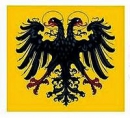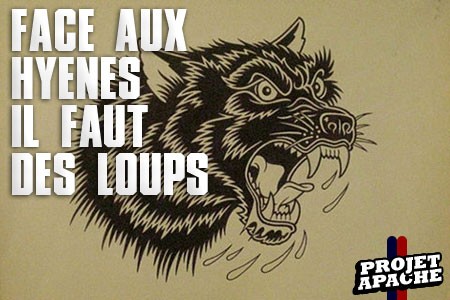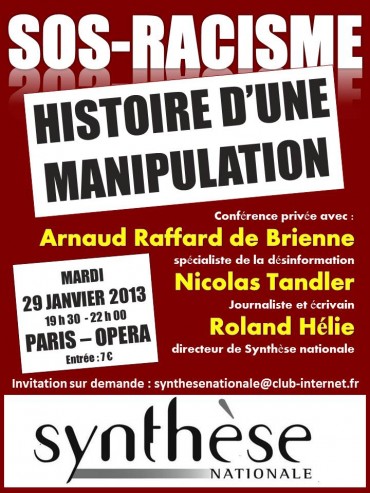mardi, 22 janvier 2013
Expanding the thinking
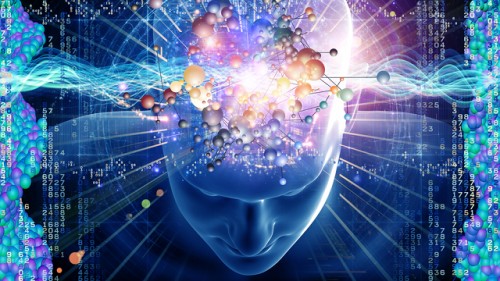
Expanding the thinking
We are witnessing a new era in Asia – in contrast to North America, Europe is in danger of missing the same
by Urs Schoettli
Ex: http://www.currentconcerns.ch/
cc. Many politically active thinkers have noticed in recent weeks that in some places, the equilibrium is shifting and the screws are adjusted anew. Does our thinking lag behind reality? Have we been fed only with polemics about entire parts of the world since the Lehman Brothers crisis?
That means that thinking needs to be ex-panded so that it can focus on reality. The following articles are devoted to this issue.
While in Europe one crisis chases the next and tunes of gloom and doom are sounded, major developments are underway in Asia that give rise to optimism. Unfortunately, the historical turn of an era is perceived in a very limited manner in Europe. The US as a resident state of the Pacific Rim are more on alert.
Coming from Asia it is not a pleasant matter to visit Europe, currently. The Western World seems to have once again fallen victim to one of its collective civilization tantrums. An apocalyptic mood prevails everywhere, with respect to the euro, the climate, democracy and the market economy. What a dramatic difference to the euphoria following the fall of the Berlin Wall, when the Westerners thought that world history would now be written anew once and for all time, the noble values of liberalism would meet with worldwide recognition.
Under such circumstances it is difficult to be optimistic, and yet we want to take a chance. First we must recall once again that the Europeans of the 68 generation are among the most favored generations of world history. Not only could they benefit from the unprecedented prosperity and peace of the last six decades, they could as well witness two positive turning points in world history: the disappearance of the Iron Curtain in Europe and the re-emergence of Asia – not only its return to the world economy and to world politics, but also, and above all its cultural and intellectual renaissance.
Cause to be optimistic
It is due to a persistent Euro-centrism that up to now the Asian Renaissance has not yet been perceived by the intellectual mainstream in Continental Europe as a major turning point. What knowledge is being developed at universities about the development in Asia remains largely confined to an interested audience. What is lacking is the reflection and classification of the historical changes in Asia in a general critique of the times. The main task is to adequately comprehend the dimensions of the Asian Renaissance. What is going on today in India, in China and in Japan, how Asia positions itself in the world of the 21st Century, has its origins in a more distant past, which cannot be comprehended within the traditional world history, which has largely marginalized the Orient as exotic. Thus, for instance the discussion of the Confucian concept of the state in new China, or the relevance of the Meiji Restoration in Japan for pending reforms should finally be picked up in Europe as well.
The historical and cultural classification of the beginnings of Asian renaissance could certainly help to brighten up the rampant pessimism in Europe. Where do we find the overdue acknowledgement that we, despite of all the problems that worry us from Iran to North Korea, from Syria to South Africa, live in a time in which also optimism is justified? What can there be more splendid than to experience how in countries of continental dimensions two centuries of self-inflicted and externally caused decadence have been overcome, that about a billion people are freed from bitterest poverty, hundreds of millions of households have moved up into the middle class, new industries, the most modern infrastructure and glittering cities are being raised, the general level of education is being raised and dozens of universities can join up to the best in the world!
The perception of the new Asia in Europe is ambivalent. On the one side there is the corporate world, which has discovered Asia since long and does lucrative business there. Since long there are not only multinational and big companies, but also SMEs who have discovered Asia as a market and production location. Just Switzerland and Germany, which in contrast to many other European countries can still count on a competitive and highly innovative manufacturing industry, know how much the prosperity of the Old World depends on Asia’s welfare by now. On the other hand, there are also fears in the face of the “yellow peril” that Asians could buy Europe and steal its jobs.
Knowledge about Asia as an educational mandate
The short-winded media are focusing once again on sensations and wrong developments in Asia. A majority of reports make India appear as a subject of corruption and poverty, China is described regarding violations of human rights and regarding the persecution of dissidents. And as for Japan, the headlines are full of reports on the catastrophe at the nuclear site of Fukushima. Of course it is the function of a free press to denounce irregularities, but if commentators who have hardly ever lived in Asia and foreign correspondents who after a short time know everything better than the locals, if those people define the level of information alarming distorts are of course, the inevitable consequence.
It proves to be fatal that the knowledge about Asia does not count among traditional Western educational subjects but if this was the case, it would permit the Europeans to correctly evaluate the enormous changes Asia has gone through in the last three decades. Whereas in the Anglo-Saxon world a far stronger cosmopolitism of language and media permits Asian voices to gain direct publicity, in Continental Europe notwithstanding there is the paternalistic fug of a number of self-nominated experts who are as arrogant as to occupy the monopoly of interpretation and explanation of what is the mentality the “Asiatic type”, the “Chinese type”, of the “Indian type” or what it should be. Especially concerning the “Middle Kingdom” where there has been a long tradition of Europeans since Leibniz projecting their own ideas onto the Chinese people.
Indeed “9/11” was a shock, a bloody and bitter ceasure which to the present day has influenced and put a strain on the relations between the predominantly secularized West and the Islamic world. The decline partly already realized, partly imminent and leading to bloody religious wars which we had supposed to have been overcome since the Age of Enlightenment, is worrying and anguishing lots of people. It is the more important to correctly evaluate the modernization processes that are going on in Asia. For several decades pleasant developments have been happening there which should inspire some optimism in us. Who always looks at China focusing only on the aspect of a totalitarian regime, ignores the gigantic progress that has been achieved in terms of the development of Law in China. Who only focuses on corruption whenever talking about India, ignores the big number of purifying forces that are working among the citizens, in the media and in their policy. Even if the balance might be so-so, and even if there is still the possibility for some improvement, the general direction, the development which India, China and Southeastern Asia is taking makes you very confident. Positive things are happening there which Europeans may often only dream about.
Solid foundations
Certainly Asia is not immune to economic downturns or even crises either. Currently the big three, Japan, China and India, also suffer from the global economic turmoil of the euro crisis. However, the main causes of the economic downturn is homemade and can therefore be solved on their own again. Those who consider Asia’s economic renaissance a temporary phenomenon are wrong. Not only does the huge unmet demand in domestic markets ensure prospects for favorable growth, but also the major infrastructural and institutional basis has been laid in the past three decades, which can be built upon in the future. Not least, we think of the tremendous advances in higher education.
The times when Europeans were able to give fatherly benevolent judgments on the success of Asians are over. Likewise, the injuries caused by the European colonial empires in 19th and 20th century receded into the background. No longer do all Chinese interlocutors remind you of the Europeans’ crimes in the Opium Wars. The generational change that is under way guarantees that you meet on an equal footing. On the Asian side there is still an enormous desire to learn, but there is the confidence as well that they will be able to catch up with the West, even surpass it. Injuries like the “Cultural Revolution” have faded into the background.
At the start of the Asian Age, the word “ex oriente lux” gets a new meaning. After the transfer of knowledge, techniques and ideas has gone unilaterally from the West to the decadent East for too long a time, a self-doubting Europe may now receive new impetus from Asia. In this case, the exchange should go far beyond prosperous economic relations and should bring cross-fertilization in a comprehensive sense. There would be a great benefit if - two centuries after Hegel’s time – the Europeans were able to look at developments in world history not only from their own cherished point of view.
Source: Neue Zürcher Zeitung, 19.11.2012
(Translation Current Concerns)
00:05 Publié dans Actualité, Affaires européennes, Géopolitique | Lien permanent | Commentaires (0) | Tags : politique internationale, géopolitique, europe, affaires européennes, asie, affaires asiatiques, géostratégie |  |
|  del.icio.us |
del.icio.us |  |
|  Digg |
Digg | ![]() Facebook
Facebook
La dialectique ami/ennemi

La dialectique ami/ennemi
Analyse comparée des pensées de Julien Freund et Carl Schmitt
Penser les relations de puissance à partir de la dialectique de l’ami/ennemi requiert en préalable de se déprendre des chatoiements de l’idéologie, des faux-reflets de tous ces mots en “isme” qui caractérisent l’apparence scientifique donnée aux engagements politiques. Carl Schmitt et Julien Freund l’avaient compris dès la fin de la Seconde Guerre mondiale. Leur clairvoyance eut un prix : l’isolement et le reniement des grands clercs d’une époque imprégnée par le marxisme. Si aujourd’hui les deux auteurs sont redécouverts dans certaines sphères de l’Université, leurs œuvres sont encore mal cernées et leurs exégètes suspectés. En effet, une lecture critique ou partisane de Schmitt et Freund implique de penser “puissance”, “ennemi”, termes qui sont à ranger au registre des interdits de notre société. Cette approche devrait pourtant sous-tendre toute analyse réaliste des rapports entre acteurs des relations internationales.
Mise au point :
 Carl Schmitt fut un élément du régime nazi durant la Seconde Guerre mondiale quand Julien Freund, étudiant en philosophie, entrait en résistance très tôt. Si leurs œuvres sont marquées par les vicissitudes d’une époque particulière, elles les surpassent toutefois pleinement. L’angle sous lequel ils en viennent à penser la relation ami/ennemi tire sa force d’une double volonté d’extraction et d’abstraction de ce contexte. Il est intéressant de remarquer que, par delà les oppositions de l’Histoire, une certaine communauté de destin relie Freund et Schmitt : exclus par les clercs de leur vivant, ils sont aujourd’hui progressivement tirés des limbes où de mauvais desseins et d’éphémères raisons les avaient placés.
Carl Schmitt fut un élément du régime nazi durant la Seconde Guerre mondiale quand Julien Freund, étudiant en philosophie, entrait en résistance très tôt. Si leurs œuvres sont marquées par les vicissitudes d’une époque particulière, elles les surpassent toutefois pleinement. L’angle sous lequel ils en viennent à penser la relation ami/ennemi tire sa force d’une double volonté d’extraction et d’abstraction de ce contexte. Il est intéressant de remarquer que, par delà les oppositions de l’Histoire, une certaine communauté de destin relie Freund et Schmitt : exclus par les clercs de leur vivant, ils sont aujourd’hui progressivement tirés des limbes où de mauvais desseins et d’éphémères raisons les avaient placés.
La première rencontre des deux hommes se produit à Colmar, en 1959. Julien Freund en revient marqué : « j’avais compris jusqu’alors que la politique avait pour fondement une lutte opposant des adversaires. Je découvris la notion d’ennemi avec toute sa pesanteur politique, ce qui m’ouvrait des perspectives nouvelles sur les notions de guerre et de paix » (1). L’analyse en termes d’ami/ennemi les met dans une situation périlleuse vis-à-vis de leurs contemporains. Le sujet est sensible puisqu’il donne une consistance à la guerre, ce à quoi se refusent les pacifistes marqués par les utopies marxistes et libéralistes. Pour ceux-ci la paix perpétuelle est l’aboutissement eschatologique logique permis soit par la réalisation marxiste du sens de l’Histoire, soit par l’expansion du commerce pacificateur des mœurs.
Différence d’approche :
Pour Schmitt : « la distinction spécifique du politique […] c’est la discrimination de l’ami et de l’ennemi. Elle fournit un principe d’identification qui a valeur de critère et non une définition exhaustive ou compréhensive » (2). A son sens, la dialectique ami/ennemi s’appréhende comme un concept autonome dans la mesure où elle ne s’amalgame pas avec des considérations morales (bien/mal) ni esthétiques (beau/laid), mais constitue en elle-même une opposition de nature.
Dans la pensée freundienne de l’essence du politique, le présupposé ami/ennemi commande la politique extérieure. Il est associé à la relation commandement/obéissance (présupposé de base du politique) et la relation privé/public (présupposé commandant la politique intérieure). Chacun de ces présupposés forme une dialectique indépassable : aucun des deux termes ne se fait jamais absorber par l’autre. Julien Freund prend appui sur la dialectique ami/ennemi pour prouver que les guerres sont inhérentes au politique et donc inévitables à l’Homme. Invoquant la relation public/privé, Freund établit une différence entre l’ennemi privé (intérieur, personnel) et l’ennemi public ou politique. À mesure qu’une opposition évolue vers la distinction ami/ennemi, elle devient plus politique car « il n’y a de politique que là où il y a un ennemi réel ou virtuel » (3). L’Etat est l’unité politique qui a réussi à rejeter l’ennemi intérieur vers l’extérieur. Mais son immuabilité n’est pas acquise. Le présupposé de l’ami/ennemi est donc celui qui conditionne la conservation des unités politiques. La relation dialectique propre à ce couple est la lutte dont un aspect essentiel réside dans la multiplicité de ses formes : il ne s’agit pas uniquement, par exemple, de la lutte des classes à l’ombre de laquelle K. Marx analyse l’histoire de toute société. La lutte surgit dès que l’ennemi s’affirme.
Contrairement à C. Schmitt, Freund ne fait pas de la distinction ami/ennemi un critère ultime du politique, mais un présupposé parmi d’autres. Chez Schmitt la notion de l’unicité du concept ami/ennemi dans l’essence du politique peut contribuer à renverser la formule de Clausewitz et admettre que la guerre ne serait plus le prolongement de la politique mais sa nature même. Or, ce n’est pas ce que Freund envisage.
Ami/ennemi dans la logique de puissance :
Une politique équilibrée de puissance doit identifier l’ennemi, figure principale du couple dans la mesure où c’est avec lui que se scelle la paix et non avec l’allié. Nier son existence comporte donc un risque, un ennemi non-reconnu étant toujours plus dangereux qu’un ennemi reconnu. « Ce qui nous paraît déterminant, c’est que la non reconnaissance de l’ennemi est un obstacle à la paix. Avec qui la faire, s’il n’y a plus d’ennemis ? Elle ne s’établit pas d’elle-même par l’adhésion des hommes à l’une ou l’autre doctrine pacifiste, surtout que leur nombre suscite une rivalité qui peut aller jusqu’à l’inimitié, sans compter que les moyens dits pacifiques ne sont pas toujours ni même nécessairement les meilleurs pour préserver une paix existante » (4). Par ailleurs il ne faut pas céder à la tentation de croire que la guerre règle définitivement les problèmes politiques posés par l’ennemi : « même la défaite totale de l’ennemi continuera à poser des problèmes au vainqueur » (5). Le conflit israélo-arabe en est l’exemple type.
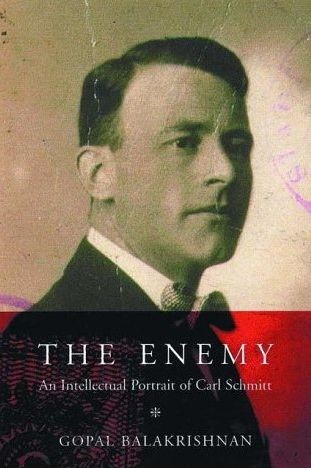 S’il est nécessaire de ne jamais remettre en cause les acquis de la paix et de toujours se battre pour elle, il faut pourtant se défaire des illusions que véhicule un certain pacifisme des esprits. Une nation insérée dans le jeu mondial doit, pour survivre, identifier ses ennemis. Car elle ne peut pas ne pas en avoir. La difficulté réside dans le fait que l’ennemi est aujourd’hui plus diffus, plus retors. Il se masque, déguise ses intentions, mais n’est ni irréel ni désincarné. Sa forme évolue sans cesse et ne se réduit plus à l’unique figure étatique. Dans tout nouvel acteur (entreprise, ONG…) sommeille une inimitié possible. A l’inverse, certains pays recherchent un ennemi de manière forcenée. C’est le cas des Etats-Unis, en particulier avec l’Irak et de manière générale dans toute leur politique extérieure depuis 1990.
S’il est nécessaire de ne jamais remettre en cause les acquis de la paix et de toujours se battre pour elle, il faut pourtant se défaire des illusions que véhicule un certain pacifisme des esprits. Une nation insérée dans le jeu mondial doit, pour survivre, identifier ses ennemis. Car elle ne peut pas ne pas en avoir. La difficulté réside dans le fait que l’ennemi est aujourd’hui plus diffus, plus retors. Il se masque, déguise ses intentions, mais n’est ni irréel ni désincarné. Sa forme évolue sans cesse et ne se réduit plus à l’unique figure étatique. Dans tout nouvel acteur (entreprise, ONG…) sommeille une inimitié possible. A l’inverse, certains pays recherchent un ennemi de manière forcenée. C’est le cas des Etats-Unis, en particulier avec l’Irak et de manière générale dans toute leur politique extérieure depuis 1990.
Les essences, ces activités naturelles de l’Homme, s’entrechoquent, s’interpénètrent et dialoguent constamment. L’économique et le politique, par exemple, sont à la fois autonomes, inséparables et en conflit. Or, force est de constater que la nature des rivalités pour la puissance prend une teinte économique croissante, expliquant par là l’invisibilité, la déterritorialisation et la dématérialisation de l’ennemi. Ce changement n’est pourtant pas définitif puisque la dialectique antithétique entre les essences de l’économique et du politique prend la forme d’un conflit perpétuel et sans vainqueur.
L’enseignement s’ensuit que le postulat ami/ennemi de l’analyse freundienne, inspiré mais différencié de l’approche schmittienne, doit constituer le fondement d’une étude actualisée du phénomène guerre et des enjeux de puissance, de compétition entre nations.
Jean-Baptiste Pitiot
Bibliographie:
FREUND Julien, L'essence du politique, Paris, Sirey, [1965], 4e éd., Paris, Dalloz, 2004, 867 pages
FREUND Julien, « Préface », [1971] in : SCHMITT Carl, La notion de politique – Théorie du partisan, Paris, Champs classiques, 2009, pp.7-38
FREUND Julien, Sociologie du conflit, Paris, PUF, coll. « La politique éclatée », 1983, 382 pages
SCHMITT Carl, La notion de politique – Théorie du partisan, Paris, Champs classiques, 2009, 323 pages
TAGUIEFF Pierre-André, Julien Freund, Au cœur du politique, La Table Ronde, Paris, 2008, 154 pages
2. SCHMITT Carl, La notion de politique – Théorie du partisan, Paris, Champs classiques, 2009, p.64
3. FREUND Julien, L'essence du politique, Paris, Sirey, [1965], 4e éd., Paris, Dalloz, 2004, p. 448
4. Ibid. p.496
00:05 Publié dans Philosophie, Polémologie, Révolution conservatrice, Théorie politique | Lien permanent | Commentaires (0) | Tags : philosophie, polémologie, théorie politique, sciences politiques, politologie, carl schmitt, julien freund, révolution conservatrice |  |
|  del.icio.us |
del.icio.us |  |
|  Digg |
Digg | ![]() Facebook
Facebook
Stefan George „Du schlank und rein wie eine flamme..."
00:05 Publié dans Littérature, Révolution conservatrice | Lien permanent | Commentaires (0) | Tags : stefan george, allemagne, lettres, lettres allemandes, révolution conservatrice, littérature, littérature allemande |  |
|  del.icio.us |
del.icio.us |  |
|  Digg |
Digg | ![]() Facebook
Facebook
"The Hollow Men" by T.S. Eliot (poetry reading)
00:05 Publié dans Littérature | Lien permanent | Commentaires (0) | Tags : littérature, littérature anglaise, lettres, lettres anglaises, angleterre, états-unis, t. s. eliot |  |
|  del.icio.us |
del.icio.us |  |
|  Digg |
Digg | ![]() Facebook
Facebook
lundi, 21 janvier 2013
The Fourth Political Theory
Natella Speranskaya: How did you discover the Fourth Political Theory? And how would you evaluate its chances of becoming a major ideology of the 21st century?
Felix H. Widerstand: I discovered the Fourth Political Theory after making some research and looking for alternative political ways of organization. I understood that the concepts “left” and “right” are tricky and deceptive ways to mislead the people in order to divide them; and that there must be a real way to combat against globalism and resist the “new world order” that is being implemented by Zionist controlled West (USrael and it´s colony “EU”).
So, I discovered Third-positionism, and became a supporter of national-revolutionary movements in a multipolar geopolitical order (In the Arab countries they have Baathism, Nasserism; in Latinamerica they have Peronism, Bolivarianism; and in our countries we have Eurasianism). This is also known as "international nationalism"; against chauvinism and racism but for the preservation of all identities and of all cultures. I see Eurasianism, or the Fourth Political Theory, as a contemporary way of resistance for those of us who live “from the Canary Islands to Vladivostok”. For resistance against the plutocratic, materialistic, economicist sytem disguised as "democracy", and against american cultural imperialism.
The chances to become a major ideological force are now still low in my opinion (at least for westerners), because of the constant brainwashing that our society is exposed to. Consumerism, individualism, mammonism, and all kind of filth is being pumped in the brains of our people by the media on a daily basis. But the first step should be to spread the idea, to open the eyes of the people, letting them know that other ways of social organization are possible. Then, we need good leaders able to organize the people and who can stand strong and defiantly against the NWO, always defending national soveraignity, at all costs.
The best way of political organization is, in my opinion, a traditional one, were spiritual values are respected, were a collective pride is encorauged, and were social justice is implemented; against usury, exploitation and capitalism.
But this ideas are viewed as “extremist” “fascist” and “anti-democratic” by the politically correct left and by the politically correct right.
Natella Speranskaya: Leo Strauss when commenting on the fundamental work of Carl Schmitt The Concept of the Political notes that despite all radical critique of liberalism incorporated in it Schmitt does not follow it through since his critique remains within the scope of liberalism”. “His anti-Liberal tendencies, – claims Strauss, - remain constrained by “systematics of liberal thought” that has not been overcome so far, which – as Schmitt himself admits – “despite all failures cannot be substituted by any other system in today’s Europe. What would you identify as a solution to the problem of overcoming the liberal discourse? Could you consider the Fourth Political Theory by Alexander Dugin to be such a solution? The theory that is beyond the three major ideologies of the 20th century – Liberalism, Communism and Fascism, and that is against the Liberal doctrine.
Felix H. Widerstand: Indeed, the Liberal doctrine (plutocracy, usury and wild capitalism) is the parasitic economic system used by US-imperialists (Zionists, because Zionists are not only in “Israel”, they are in Washington and New York as well) to control the world and destroy the economic and national soveraignity of all countries that still follow independent policies and don´t bow to globalism. We have seen this very recently in Libya, we saw this in Iraq, in Yugoslavia, and are witnessing the same again with the events going on in Syria. What a coincidence that all countries that are being destroyed by the warmongers had an independent banking system and were not followers of the Liberal doctrine!!
Leo Strauss was the main perpetrator of the “neocon” ideology, he was a Zionist supremacist like all his powerful and now active followers (Elliott Abrams, Paul Wolfowitz, Charles Krauthammer, Richard Perle, Douglas Feith, and so on and so forth – all this filthy disgusting criminals have a very evil agenda)
The solution to liberalism would be to restore the national and economic soveraignity of all countries, in a geopolitically multipolar world. We must go out of the “European Union”, go out of the World Bank, Greece (for instance) should stop paying interests to the banksters of Goldmann Sachs; all countries wanting national soveraignity back should go out of all this international globalist organizations that, in an Orwellian way, are enslaving countries in the name of “freedom and democracy”.
I see Prof. Dugin´s organization and activism as a very good alternative to fight against this system.
Natella Speranskaya: Do you agree that today there are “two Europes”: the one – the liberal one (incorporating the idea of “open society”, human rights, registration of same-sex marriages, etc.) and the other Europe (“a different Europe”) – politically engaged, thinker, intellectual, spiritual, the one that considers the status quo and domination of liberal discourse as a real disaster and the betrayal of the European tradition. How would you evaluate chances of victory of a “different Europe” over the ”first” one?
Felix H. Widerstand: Of course, there are this two Europes; the first one is being imposed upon us by the Masonic architects of the liberal agenda – see the “Kalergi plan” – particularly since the so-called “Frankfurt School” (Horkheimer, Adorno, Marcuse…) started to spread all kind of filth and poison to overthrow the traditional European values and society with their “cultural Marxism” and “political correctness”; they (by the way) directly influenced the May ´68 protests in France (a CIA operation, the first “colour revolution”, long time before Ukraine´s) with agitators like Cohn-Bendit, to overthrow President De Gaulle, who did not bow to NATO as requested.
This “liberal Europe”, slowly suffocating us, is sadly the majoritary tendency; particularly in the West. The “other” Europe, the “different” one, is the one resisting to this psychological warfare and dominium strategy. We are the minority. But this spiritual, traditional Europe, proud and conscious of its roots and willing to preserve its soveraignity and its identity is geographically much better represented in the East: I see Russia as a big hope for all Europeans.
Natella Speranskaya: “There is nothing more tragic than a failure to understand the historical moment we are currently going through; - notes Alain de Benoist – this is the moment of postmodern globalization”. The French philosopher emphasizes the significance of the issue of a new Nomos of the Earth or a way of establishing international relations. What do you think the fourth Nomos will be like? Would you agree that the new Nomos is going to be Eurasian and multipolar (transition from universum to pluriversum)?
Felix H. Widerstand: Yes, we must rediscover our past, to better understand our present, because only if we understand our present we will be able to construct our future. A Multipolar worldview, like the one proposed by the Eurasian movement, is the only alternative against the planetary hegemony on the “one-World” imperialists.
Natella Speranskaya: Do you agree that the era of the white European human race has ended, and the future will be predetermined by Asian cultures and societies?
Felix H. Widerstand: I would rather say that the white European human race has being forced to an end in Europe, due to bio-social engineering, and a very careful and well prepared long-term programm (remember the Kalergi-plan).
Indeed, the Asian (particularly the Chinese and Indian masses) outnumber the Europeans extremely, and the Africans as well… They are very numerous, while the whites are always becoming less and less.
In this context of the Asian cultures, it is sad to point out that the great Japanese nation, with a heroic history and tradition, has been americanized in the last decades becoming also a corrupted capitalistic-mercantilistic society, almost as bad as the modern western civilization.
Natella Speranskaya: Do you consider Russia to be a part of Europe or do you accept the view that Russia and Europe represent two different civilizations?
Felix H. Widerstand: I consider Russia a particular, an own civilization, but with European roots. Nowadays there is a very huge difference in the average mentality of the ordinary westerner and the Russians (and other Eastern Europeans); because Russians and Easterners are still not that corrupted by western poison, and they are still able to preserve their heritage and identity.
Natella Speranskaya: Contemporary ideologies are based on the principle of secularity. Would you predict the return of religion, the return of sacrality? If so, in what form? Do you consider it to be Islam, Christianity, Paganism or any other forms of religion?
Felix H. Widerstand: The contemporary ideologies that proliferate in the West after the French Revolution and were reaffirmed during the XX century by freudo-marxist currents are indeed propagating secularism and atheism. The Masonic-talmudic architects behind these modern ideologies know perfectly well that this is the best method to weaken a society: by spreading individualism and condemning communitarism and spirituality: “Divide and conquer!”
Christianity has been infiltrated and destroyed from within in the western world, and almost all (organized churches) what remains is corrupt (the Vatican, the Protestant sects, etc). Only in the East, like in Russia, the Orthodox faith represents still a spiritual alternative. Islam, on the other side, has proved to be a good way of resistance for the Muslim countries. Particularly the Shia-current, practiced mostly in Iran, and that preserves also some ancient Persian Zoroastrian heritage. But also within Islam there is a tendency trying to destroy this religion from within, like a Trojan horse: It´s Saudi wahhabism, the “Calvinist” kind of Islam. This wahhabi (or salafi) fanatics are being supported by the West, this is the main ideology behind “Al-Qaeda” and all this terrorist groups which took over Libya and are trying to destroy Syria. Also, this is the ideology of the Chechen terrorists, and of the Bosnian ones in the Yugoslavian wars of the ´90. This demonic perversion, which has nothing to do with real Islam (like scholar Imran Hosein and many other real Muslims pointed out), is being used by the West as proxy, as mercenaries, as "useful idiots".
Zionist imperialism is trying to put Christianity and Islam against each other (“Clash of civilizations”), to destroy both of them more easily. And the sad thing is that they are being succesfull! We must awake and realize who the real enemy is.
While I sympathize with ancient Paganism, I think that we have to be very careful with the modern “neo-pagan” tendencies that are being spread in the West since the “hippy” times; all this “New Age” fake spirituality is also a part of this plan to overthrow culture and society.
In my opinion, every nation, every culture, should be attached to its own spiritual tradition; be proud of it and stay strong. We see this with sovereign national leaders like President Chávez from Venezuela, who is a fervent Catholic; or with President Lukashenko from Belarus who is a devout Orthodox Christian. Also the martyr Gaddafi, was a strong believer in Islam (he encouraged Sufism and Islamic studies in Libya). He condemned the Wahhabi terrorism and rightly pointed out that this disgusting Saudi ideology is nothing more than an infiltration of the Zionist West in the Arab-Muslim world.
00:05 Publié dans Actualité, Entretiens, Nouvelle Droite, Théorie politique | Lien permanent | Commentaires (0) | Tags : entretiens, nouvelle droite, théorie politique, sciences politiques, politologie |  |
|  del.icio.us |
del.icio.us |  |
|  Digg |
Digg | ![]() Facebook
Facebook
DESMONTANDO EL MITO ANDALUSÍ. ANDALUCÍA Y LA IDENTIDAD CASTELLANA.
DESMONTANDO EL MITO ANDALUSÍ.
ANDALUCÍA Y LA IDENTIDAD CASTELLANA.
Enrique Ravello
Ex: http://enricravello.blogspot.com/
00:05 Publié dans Histoire | Lien permanent | Commentaires (0) | Tags : histoire, espagne, andalousie, identité castillane, castille, leon, reconquista |  |
|  del.icio.us |
del.icio.us |  |
|  Digg |
Digg | ![]() Facebook
Facebook
Oslo: Parc Vigeland, août 2011
00:05 Publié dans art | Lien permanent | Commentaires (0) | Tags : art, arts plastiques, sculpture, norvège, oslo, vigeland, parc vigeland |  |
|  del.icio.us |
del.icio.us |  |
|  Digg |
Digg | ![]() Facebook
Facebook
SOS-Racisme: histoire d'une manipulation
00:05 Publié dans Actualité, Evénement, Manipulations médiatiques | Lien permanent | Commentaires (0) | Tags : sos-racisme, événement, paris, france, manipulation, manipulations médiatiques |  |
|  del.icio.us |
del.icio.us |  |
|  Digg |
Digg | ![]() Facebook
Facebook
Classical Modernism & the Art of the Radical Right
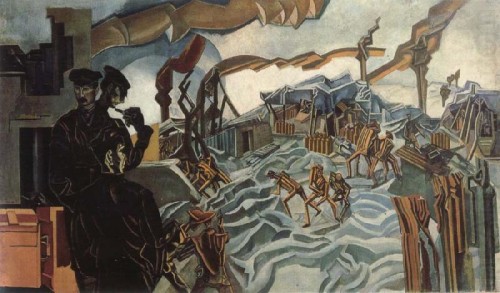
Classical Modernism & the Art of the Radical Right
By Jonathan Bowden
Edited by Alex Kurtagić
Editor’s Note:
The following is an excerpt from Jonathan Bowden’s Heat. He wrote the text aged 30, between July and September 1992. The text is reproduced as it appears, only lightly edited for spelling and punctuation.
. . . this brings a particular dilemma to the surface, namely the division between political and literary extremism. This is the division or discrepancy, if one exists, between the expectation, thought, and expression of a particular desire and its political realization. Indeed, Stephen Spender was quick to point out in his introduction to Alistair Hamilton’s book The Appeal of Fascism: Fascism and the Intellectuals [2]![]() , that a large amount of guilt underlay the Leftist response to fascism in the thirties—namely, his own flirtation with communism, among others, could be explained by the proximity he saw between intellectual gestures and the irrationalism of the radical Right.
, that a large amount of guilt underlay the Leftist response to fascism in the thirties—namely, his own flirtation with communism, among others, could be explained by the proximity he saw between intellectual gestures and the irrationalism of the radical Right.
In a sense Spender had recognized that an enormous amount of anti-bourgeois emotion and Romantic conceit—the entire sweep of Romanticism, Symbolism, and the Decadence—had at root “fascistic” emotions. This was a somewhat sweeping statement, it had to be admitted, but it was not completely inaccurate. For as with the Symbolist and decadent liberal anarchist Octave Mirbeau and his Garden of Supplicants, a large amount of Romantic rhetoric was bourgeois anti-bourgeois. In other words, it was so radical it soon began to take leave of the class, namely the middle class, which had given it birth. It was Spender’s understanding (in a rudimentary way) of the thesis which George Lukács would later put in a more forceful manner (namely, in The Destruction of Reason) that turned this poet into a pansy-Bolshevik; a pink shade of red—a member of the Homintern. Yet Spender grasped a fundamental point, which is often overlooked, and this has to do with the educated antecedents of classical fascism. It is as if—at least at one level of consciousness—all work of a Romantic, pre-modern, anti-modern, illiberal, and anti-Victorian guise presaged a classical vision of the Right. It even penetrated into the early stages of modernism—where an attempt was made to clear away the “decadent” effluvium of High Romanticism with some sharp-edged early modernism, if not neo-classicism in modern guise. Hence, the fact that Lewis, Pound, Eliot, and Hulme were “soured” Romantics; cynical post-Romantics, if you will. Men who viewed Romanticism with a certain leavened sardonicism. It was a bitter and twisted form of modernism which looked to the past as it demolished it and to the future as it remonstrated with it on behalf of forms of the past. As a result, classical early modernism had two conflict strands within it. One of these went forward into an analysis of pure form—the architecture of formal misstatement—where all that matters is the consideration of a particular type of form; a formalist criteria, a logarithmic exercise in relation to the possibility of taste—whereby modern art produced through Surrealism and its aborted pre-birth/after-birth (Dadaism) to a consideration of color, tactility, and the instrumental nature of a form of vision. When there was nothing left to say—when art had been neutered by the nature of the photographic image, on the one hand, and the impossibility of expressing meaningful statement in a “bourgeois world,” on the other. (The latter in accordance with a particular type of minimalist Marxist aesthetic; the sort of thing which was an Adornoesque parody of itself.) While another tendency in modernism has yet to be explored and this is the proto-classicism which led early modernists to experiment with the possibility of a return to classical simplicity by virtue of a modernist aesthetic. This was why a large number of early modernists, like Epstein and Gaudier-Brzeska (whose work outraged traditionalists), were so interested in the purity of classical form—its aesthetic simplicity and proportion. Likewise, modern classicists, of a highly modernist and individualist character, like Maurras and T. E. Hulme, preached a new form of art which was spare, linear, rectangular, and masculine. In some respects, this predisposition teetered on the edge of two conflicting cultural vistas. On the one hand, it wished to go back even to before Romanticism, on the other, it wanted to recreate everything again in a way which had never been done before.
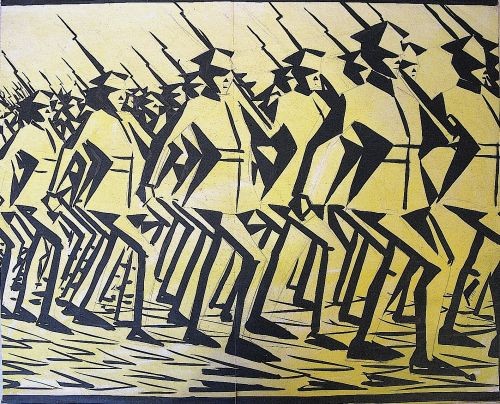
As can be seen from the projected career of various modernists, the modern aesthetic could only go so far, in that a large number would fall away before the vista of total modernity. This is in relation to a pitiful summation of complete modernism which entered into a form of reiterated stylization; sheer form in the pursuit of its absence, the formlessness of an aesthetic concerned with nothing but the possibility of misstatement. Hence, the fact that Lewis, Dalí, Marinetti, de Chirico, Roberts, Gaudier-Brzeska, and many more, gradually fell away from modernism—Dalí towards a symbolic, classical, neo-Romantic form of iconography, namely religious painting, and Lewis towards modernist figuration, expressive linearity, anti-abstraction, and blindness. Also, the latter was to repudiate a form of aesthetic futility, the abandoned purpose of nihilistic modernism—i.e., the sheer purposelessness of empty abstraction; the pursuit of a type of form which had nothing to communicate—in his book that was also a form of recantation, namely The Demon of Progress in the Arts [4]![]() .
.
So we can say that there was a form of arrested classicism within early modernism which later came to reject it. This type of art either put modernism at the service of a neo-classical state, i.e., futurism in Fascist Italy, or it embraced fully-fledged traditional neo-classicism à la Arno Breker and the return to a naturalist form of neo-Grecian art. This was a type of counter-revolution in relation to modernism; a reformatory form of counter-reformation—a type of European modernity that was anti-modernist, a modern form of non-formalist criteria, neither academic nor anti-academic. It was a form of anti-formalist, anti-Bolshevik revolutionary tradition in relation to artistic procedure. What became known—somewhat crassly—as “Nazi art.”
Indeed, it is interesting to note that after the war, after defeat, these various strands came together again, if only in the form of friendship between the various protagonists—namely, the practitioners of a form of pre-to-early modernism that had a classical bias and straightforward neo-classicists who were the radical and talented vanguard of a type of artistic traditionalism; revolutionary artistic traditionalism nonetheless. The people concerned were Breker, Dalí, Fuchs, Pound, Cocteau, Hauptmann, Céline, members of the Wagner family, Speer (if only retrospectively), and the gradual reconsideration of Vorticism and Futurism—as the political passions which had led to opposition against them began to fall away.
Source: http://www.wermodandwermod.com/newsitems/news110120131209.html [5]
Article printed from Counter-Currents Publishing: http://www.counter-currents.com
URL to article: http://www.counter-currents.com/2013/01/classical-modernism-and-the-art-of-the-radical-right/
00:04 Publié dans art | Lien permanent | Commentaires (0) | Tags : art, angleterre, wyndham lewis, peinture, avant-gardes |  |
|  del.icio.us |
del.icio.us |  |
|  Digg |
Digg | ![]() Facebook
Facebook


